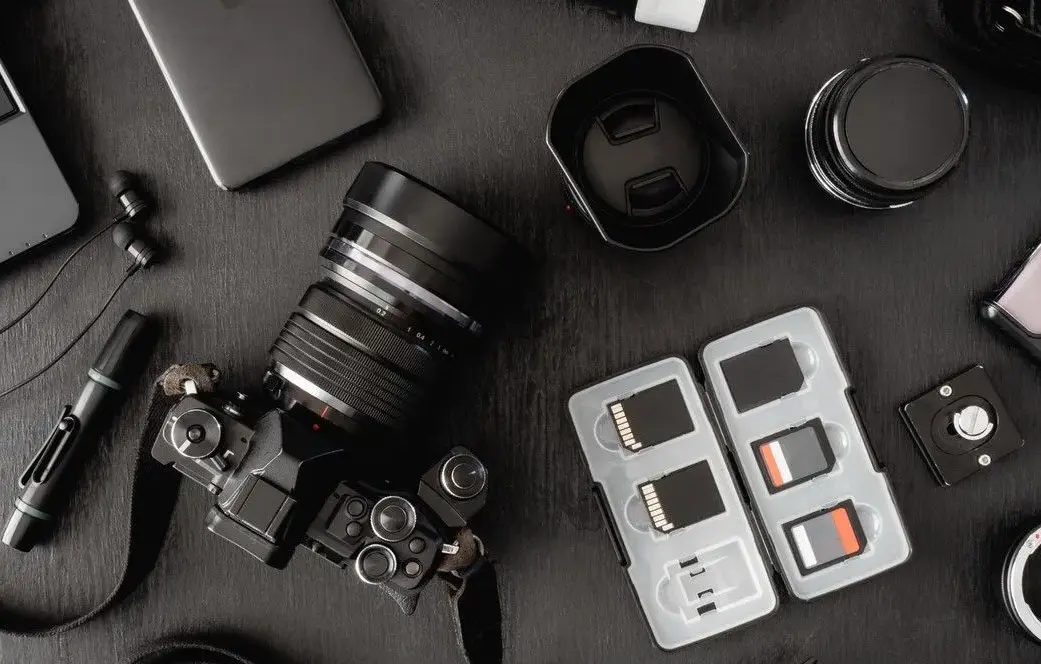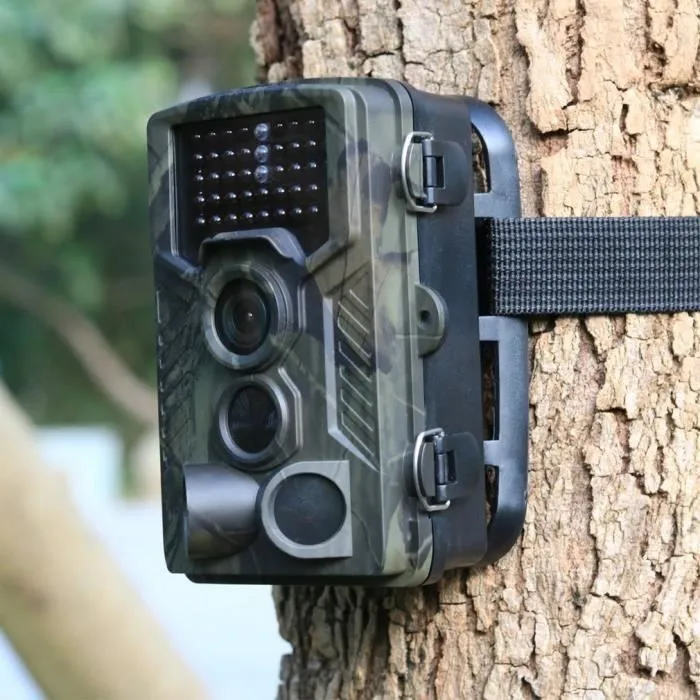Best Point and Shoot Camera: Top Picks for Travel, Vlogging, and Everyday Photography
June 9, 2025
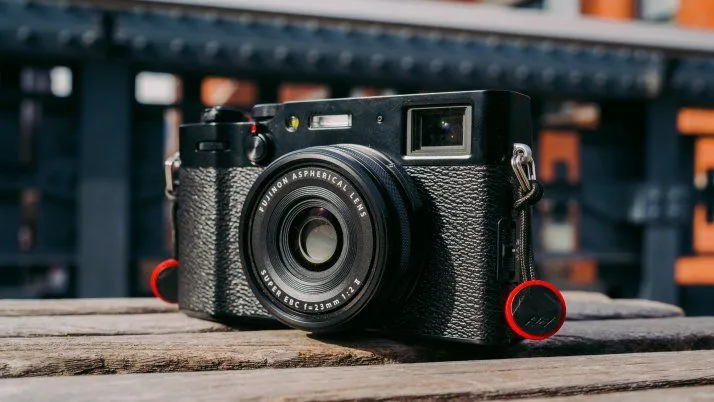
The point and shoot camera has held its place through years of evolving technology. Even in an age dominated by smartphones and mirrorless giants, compact digital cameras continue to offer something unique. They give users a true balance between convenience and quality. For travelers, vloggers or casual hobbyists, the best point and shoot camera still delivers sharp images, flexible features and reliable performance without the weight or complexity of larger setups.
One of the biggest advantages of compact cameras is control. While phone cameras have improved dramatically, they often fall short in areas like optical zoom, low light performance and manual settings. A pocket camera with zoom lets you capture faraway details with clarity that digital zoom just can’t match. The best compact camera doesn’t need to be bulky or intimidating. It fits in your bag and is ready when the moment happens.
The market in 2025 has something for everyone. Whether you're seeking the best point and shoot for travel, looking to create smooth video content or simply want better photos than your smartphone allows, there’s a model that fits your goals. From the feature-rich Sony RX100 VII to the budget friendly Kodak PIXPRO FZ55, options range from professional to playful. Some even rival DSLR-level quality in a compact shell, like the Fujifilm X100V.
This guide sorts through the clutter and breaks down what each camera does best. You’ll find suggestions for beginners, recommendations for vlogging, and solid picks for those who care about details like sensor size, image stabilization and lens sharpness. If you're looking for the best compact camera in 2025 that suits your pace, your style and your story, you’re in the right place.
Table of Contents
- Best for Travel: Sony RX100 VII
- Best for Beginners: Canon PowerShot G9 X Mark II
- Best for Vlogging: Sony ZV-1
- Best for Zoom: Panasonic Lumix ZS200
- Best Budget Option: Kodak PIXPRO FZ55
- Best Image Quality: Fujifilm X100V
- Camera Comparison Table
- What Makes a Great Point and Shoot Camera?
- Point and Shoot vs Smartphone Camera
- How to Choose the Right Camera for Your Needs
- Camera Accessories Worth Buying
- FAQs About Point and Shoot Cameras
Best for Travel: Sony RX100 VII
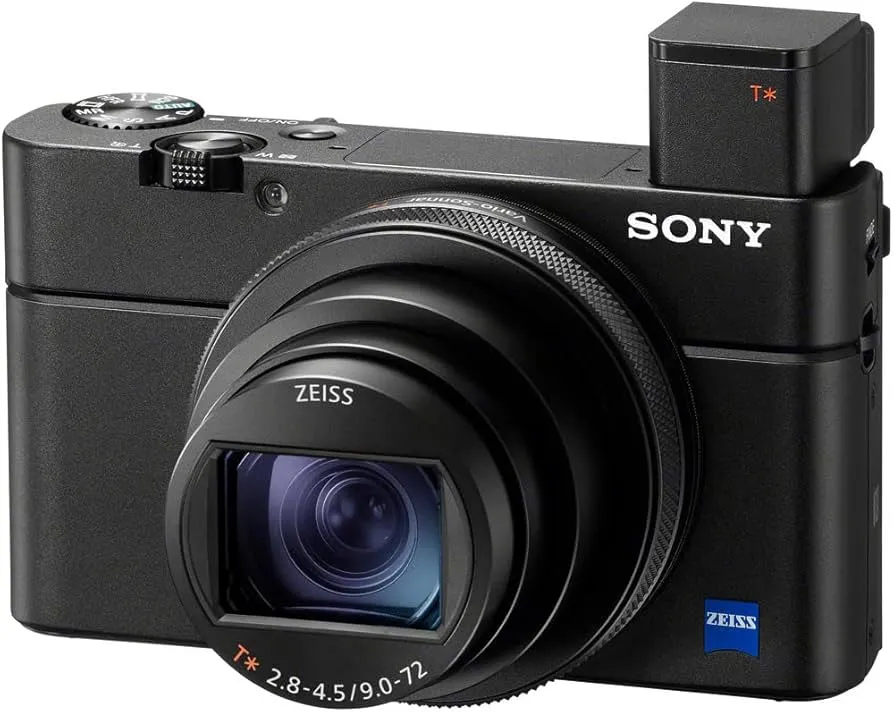
When it comes to packing light without sacrificing performance, the Sony RX100 VII remains a top choice. It combines portability with impressive specs, offering photographers and content creators a tool that delivers sharp results without weighing down their bag. This compact digital camera is built for motion, whether you're moving through city streets or capturing fast action on the go.
Its autofocus is among the fastest in its class, using real time tracking to keep your subjects sharp. The 24 to 200mm zoom lens brings flexibility to any scene, from wide landscapes to detailed close ups. For travelers shooting in unpredictable light, the one inch sensor holds up well, delivering clear, noise controlled images even at dusk or indoors. Add 4K video with full pixel readout and you’ve got a reliable travel camera that’s ready for both stills and video.
While it comes at a premium price, it’s hard to beat the balance between power and size. For anyone serious about capturing their journey with speed, quality and control, the RX100 VII checks every box.
Key specs:
- Sensor: 1 inch stacked CMOS
- Lens: 24 to 200mm equivalent zoom
- Video: 4K with no crop, S-Log3 supported
- Weight: 302g (with battery)
- Connectivity: Wi-Fi, Bluetooth, microphone input
- Compact with pro-level features
- Excellent autofocus and zoom range
- Great for low light and motion
Best for Beginners: Canon PowerShot G9 X Mark II
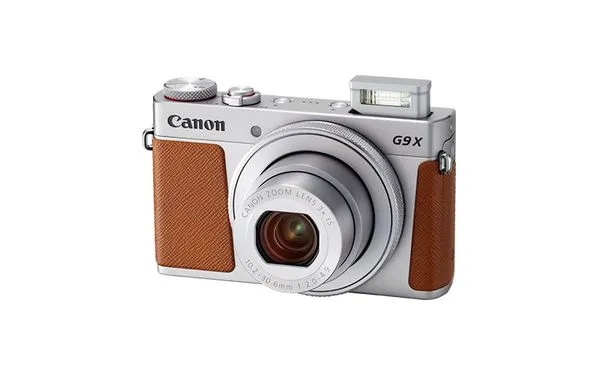
If you’re just getting into photography or upgrading from your phone’s camera, the Canon PowerShot G9 X Mark II is an easy recommendation. It offers a compact frame, clean design and a simple interface that’s welcoming to first-time users. The controls are intuitive, and the touchscreen makes navigating menus feel familiar for anyone used to smartphones. As a digital camera for beginners, it removes the intimidation without stripping away real photographic potential.
One of its best features is how it handles automatic modes. Even in full auto, the images come out sharp and well exposed. Behind the scenes, its DIGIC 7 image processor works to reduce noise and improve detail in both bright and low light. The lens gives you a modest zoom, enough for portraits, travel shots or everyday moments. It’s not designed for sports or wildlife, but it shines in casual use, especially indoors or in natural light.
This compact digital camera is also easy to carry, making it a great travel camera for those who value portability. Its price point sits in the mid range, which helps new photographers get quality performance without spending on features they may not use right away. If you’re after the best point and shoot camera for beginners in 2025, the G9 X Mark II keeps things light, sharp and stress free.
Key specs:
- Sensor: 1 inch CMOS
- Lens: 28 to 84mm equivalent zoom
- Video: Full HD 1080p at 60fps
- Weight: 206g (with battery)
- Connectivity: Wi-Fi, NFC, Bluetooth
- Simple menu system and touchscreen
- Lightweight and stylish
- Ideal for casual photography and upgrades from smartphones
Best for Vlogging: Sony ZV-1
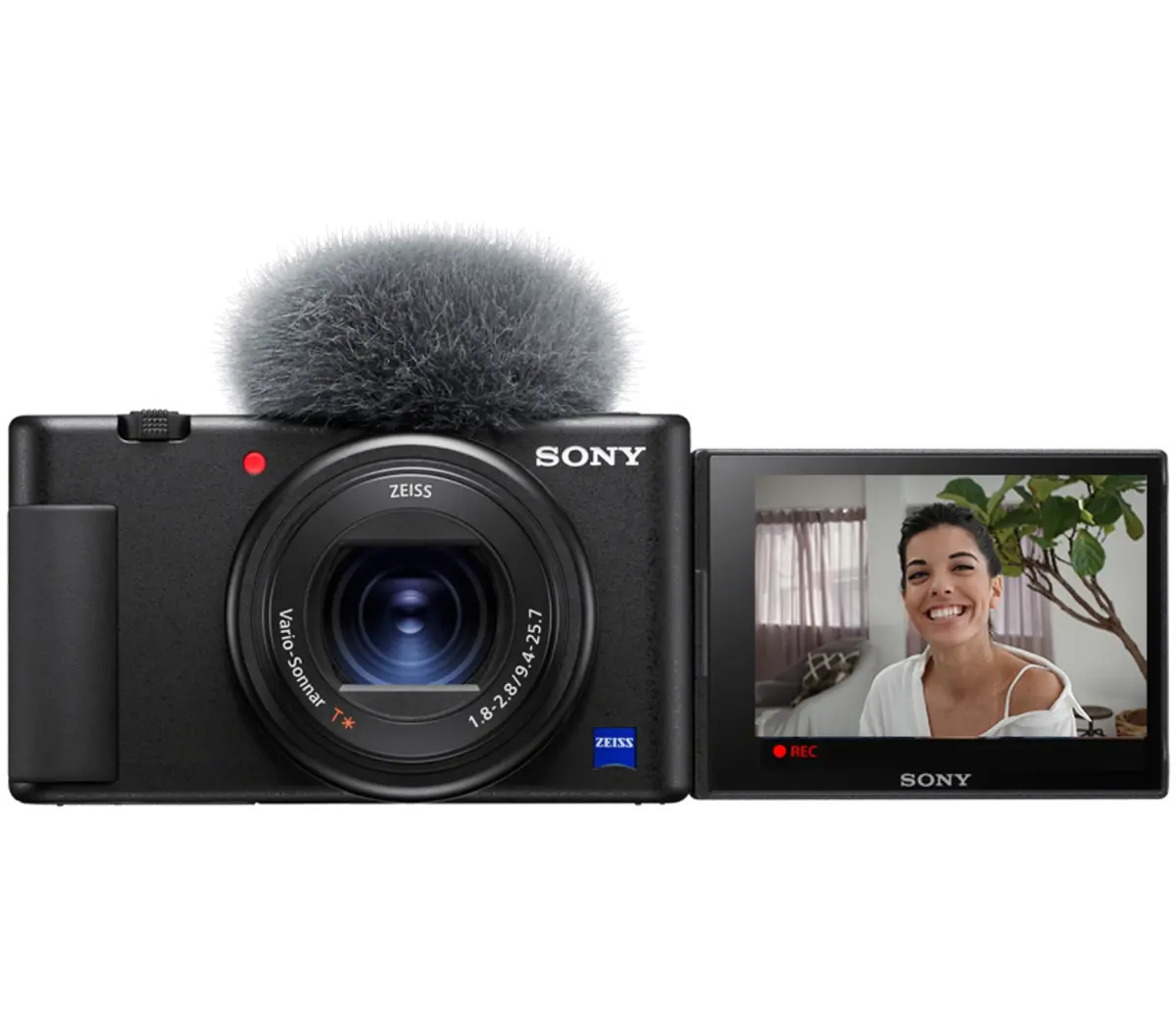
For creators who want sharp visuals and clean audio without a complicated setup, the Sony ZV-1 is a strong contender. Built with video in mind, this point and shoot camera makes recording effortless, especially for vloggers who work alone. The side flip screen lets you frame shots easily whether you’re standing behind the lens or speaking to it. With its directional microphone and included wind shield, your voice stays clear even outdoors.
The ZV-1 balances portability with performance. It features real time eye autofocus, ensuring subjects remain sharp whether you’re filming people or objects. Built in stabilization smooths handheld footage, which is especially useful when walking or shooting on the move. You can also blur the background with a simple button, adding that professional look without needing to adjust aperture settings manually. For those interested in YouTube or TikTok content, this compact camera with 4K video delivers consistent results.
Unlike heavier mirrorless setups, the ZV-1 fits easily into small bags and doesn’t call much attention when used in public. Its fast face detection, solid battery life and reliable autofocus make it one of the best point and shoot cameras for vlogging in 2025.
Key specs:
- Sensor: 1 inch stacked CMOS
- Lens: 24 to 70mm equivalent with f/1.8 to f/2.8
- Video: 4K at 30fps, Full HD at 120fps
- Weight: 294g (with battery)
- Audio: Built in 3 capsule mic, mic input, windscreen included
- Flip-out screen and directional mic
- Built-in stabilization for video
- Trusted by content creators for ease of use
Best for Zoom: Panasonic Lumix ZS200 / TZ200
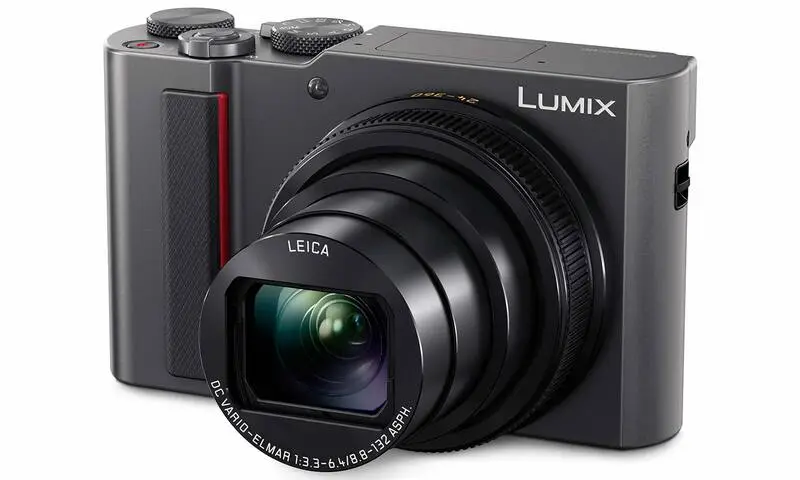
If you find yourself often needing more reach without switching lenses, the Panasonic Lumix ZS200 checks nearly every box for zoom lovers. It packs a powerful 15x optical zoom lens into a slim body that slips easily into a jacket pocket or carry-on. Unlike most ultra-zoom compacts, it manages to keep image quality consistent across its full range, making it a favorite among travelers who shoot a mix of landscapes and close-up details.
The ZS200 shines in outdoor settings, where long range photography meets bright daylight. But it’s also surprisingly capable in low light. Its one inch sensor performs better than smaller sensors found in basic point and shoot cameras, maintaining color accuracy and reducing noise even in evening or indoor scenes. The camera also includes a built in electronic viewfinder, which helps when composing shots in bright sun, giving it an edge over screen-only designs.
Video shooters will appreciate its 4K capabilities and solid image stabilization, which keeps footage steady even at full zoom. Autofocus is fast and reliable, locking onto subjects with minimal lag. While the camera doesn’t offer full manual zoom control, its range makes it one of the best compact cameras with zoom for wildlife, sports and city exploration.
The Panasonic ZS200 is well suited for anyone who wants a compact digital camera that doesn't feel limiting. Whether you're on safari, shooting a concert from the back row or capturing candid moments across a crowded street, this model brings the subject closer without weighing you down.
Key specs:
- Sensor: 1 inch High Sensitivity MOS
- Lens: 24 to 360mm equivalent, 15x optical zoom
- Video: 4K at 30fps, Full HD at 60fps
- Weight: 340g (with battery)
- Viewfinder: Built in electronic EVF
- Connectivity: Wi-Fi and Bluetooth
Best Budget Option: Kodak PIXPRO FZ55
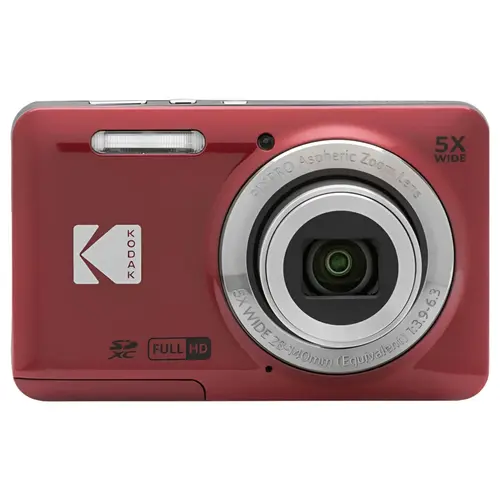
If price is your top concern but you still want more than a phone can offer, the Kodak PIXPRO FZ55 is a compact digital camera that keeps things simple without feeling limited. This model comes in well under the two hundred dollar mark and still delivers 16 megapixels, a decent zoom and HD video capabilities. For casual users, young photographers or anyone looking for a reliable backup camera, it hits the mark in all the right ways.
Despite its low price, the FZ55 includes a 5x optical zoom lens, giving you the ability to reframe shots that a fixed smartphone lens cannot. It's especially handy for vacation photos or quick candid shots where stepping forward just isn't an option. The 28mm wide angle lens also helps when capturing group photos or landscapes, making this a flexible tool for day to day photography.
The build is lightweight and slim, easy to slip into a pocket or bag. You don’t need to worry about heavy gear or complex settings. Its auto shooting modes take care of most decisions, and the interface is clear enough for beginners. While it doesn't shoot 4K or support RAW files, that's expected at this price point. What it does offer is straightforward usability and consistent results for people who just want to shoot and share.
If you're looking for the best budget point and shoot camera available today, the Kodak PIXPRO FZ55 is a surprisingly capable choice for under $150. It's not made for professional use, but for casual snapshots, it's hard to beat.
Key specs:
- Sensor: 1/2.3 inch CCD
- Lens: 28 to 140mm equivalent, 5x optical zoom
- Video: 1080p HD
- Weight: 106g (without battery)
- Battery: Rechargeable Li-ion, USB charging
Best Image Quality: Fujifilm X100V
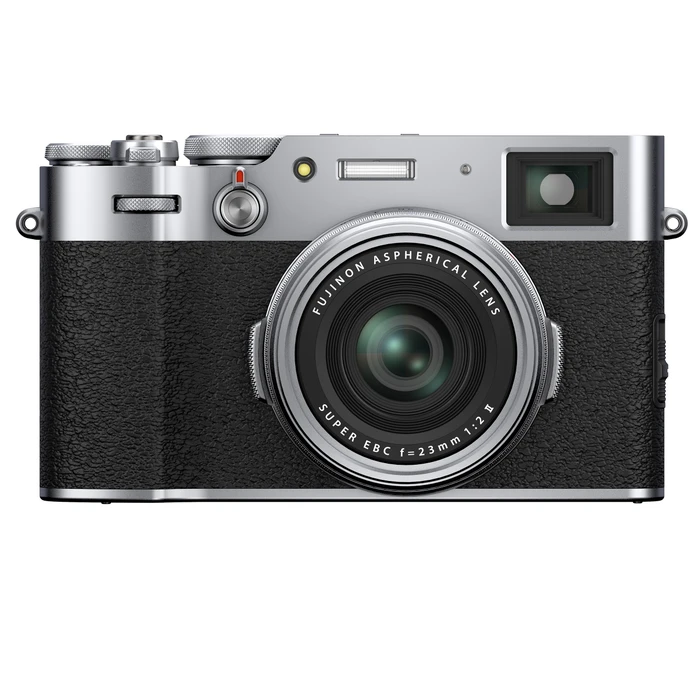
When image quality is the top priority, few compact cameras match what the Fujifilm X100V can do. This fixed lens camera is designed for photographers who want the power of an APS-C sensor wrapped in a classic, portable body. It’s not a do-it-all device, but what it does, it does remarkably well. Whether you're capturing street scenes, portraits or still life, the X100V offers rich colors, sharp detail and excellent dynamic range straight out of the camera.
What sets this model apart is its hybrid viewfinder system, combining optical and electronic modes to suit both traditionalists and tech-focused shooters. The controls feel like they were built for people who enjoy dialing in every setting, but auto modes still make it accessible. Fujifilm’s signature film simulations are available right out of the box, adding a creative touch without extra editing. The fixed 23mm f/2 lens is sharp, fast and perfectly tuned to the sensor, delivering professional results in a fraction of the size.
While not pocket sized in the strictest sense, the X100V is incredibly light for what it offers. It’s become a favorite for documentary photographers and travel storytellers who want the power of a DSLR without the bulk. With weather sealing and a tilt screen, it adapts to a wide range of conditions, from rainy streets to sunny mountain trails. It’s also capable of 4K video, making it a great hybrid tool for both stills and simple video content.
If you're looking for the best compact camera for image quality in 2025, and you're willing to work with a fixed lens, the Fujifilm X100V remains unmatched in clarity, color science and build quality.
Key specs:
- Sensor: 26.1MP APS-C X-Trans CMOS 4
- Lens: 23mm f/2 fixed
- Video: 4K at 30fps, Full HD at 120fps
- Weight: 478g (with battery)
- Viewfinder: Hybrid OVF/EVF
- Other features: Weather resistance, tilting touchscreen, film simulations
Camera Comparison Table: Top Picks Side by Side
Choosing the best camera depends on your specific needs, whether you're a beginner, a vlogger, or a serious travel photographer. Use this table to compare top models based on their sensor type, zoom range, video quality, and weight, helping you find the perfect camera for your adventures.
| Model | Best For | Sensor Type | Zoom Range | Video Quality | Weight | Price Range |
|---|---|---|---|---|---|---|
| Sony RX100 VII | Travel | 1 inch stacked CMOS | 24 to 200mm | 4K (no crop) | 302g | $$$$ |
| Canon G9 X Mark II | Beginners | 1 inch CMOS | 28 to 84mm | Full HD 1080p | 206g | $$ |
| Sony ZV-1 | Vlogging | 1 inch stacked CMOS | 24 to 70mm | 4K at 30fps | 294g | $$$ |
| Panasonic Lumix ZS200 | Zoom Photography | 1 inch MOS | 24 to 360mm | 4K at 30fps | 340g | $$$ |
| Kodak PIXPRO FZ55 | Budget-Friendly | 1/2.3 inch CCD | 28 to 140mm | 1080p HD | 106g | $ |
| Fujifilm X100V | Image Quality | APS-C X-Trans CMOS 4 | 23mm fixed lens | 4K at 30fps | 478g | $$$$ |
What Makes a Great Point and Shoot Camera?
Not every camera is built for simplicity. A great point and shoot camera strikes the right balance between convenience and capability. It offers speed and portability without asking the user to navigate complicated settings. While it’s tempting to judge a camera only by its resolution, true performance depends on more than just megapixels. Sensor size, lens quality and image processor all shape the final result. When these elements are thoughtfully combined, a compact camera can easily outperform most smartphones in everyday situations.
The best compact digital cameras share a few core strengths. First is fast startup and minimal shutter lag. A camera that reacts quickly helps you catch fleeting moments before they’re gone. Battery life also matters more than you’d think, especially for travelers. Nobody wants to carry a charger just to get through a single afternoon. Another overlooked strength is user interface. Clean menus, tactile buttons and intuitive touchscreen layouts allow the photographer to focus on the scene, not the settings.
Optical zoom is another key area where point and shoot cameras have an edge. Unlike digital zoom, which crops the image and lowers quality, optical zoom uses lens elements to bring the subject closer without losing detail. This is especially useful in outdoor settings, whether you're capturing wildlife, concerts or cityscapes. Models like the Panasonic ZS200 prove that long reach doesn't have to come with bulk.
Build quality is the final piece of the puzzle. Compact cameras take more knocks than DSLRs because they travel more. A metal chassis, weather sealing and scratch resistant screens may seem minor until you’ve dropped one on concrete. A truly great point and shoot camera is one you’re comfortable tossing in a bag, using in light rain or handing to a friend without hesitation.
Point and Shoot vs Smartphone Camera
Why Compact Cameras Still Have a Place
Smartphones may be everywhere, but compact digital cameras still offer features that phones simply can’t match. Most point and shoot cameras have larger sensors than the average phone, which means better dynamic range and low light performance. In conditions where phone cameras struggle: dim restaurants, golden hour, or night markets—a well designed point and shoot camera often delivers cleaner, sharper images.
The Power of True Optical Zoom
Zoom is another area where point and shoot cameras shine. While phones use digital zoom that crops the image and degrades quality, compact cameras like the Panasonic ZS200 offer optical zoom with glass elements that preserve detail. Whether you’re shooting distant wildlife or a performer on stage, this gives you the reach without the blur. It’s a difference you can see instantly, especially when cropping is not an option.
Handling and Controls
Even with their advanced software, smartphones can’t offer the physical control that cameras do. A real shutter button, a tactile zoom ring and clear access to ISO and aperture settings allow for faster adjustments. This kind of responsiveness makes a big difference when timing matters. The best point and shoot camera also feels like a tool built for photography, not just convenience.
Battery Life and Format Flexibility
Compact cameras often come with swappable batteries and dedicated memory cards. That means you can shoot all day without hunting for a charger. You also get the benefit of shooting in RAW, controlling video frame rates or connecting to accessories like external microphones. These are details that matter when moving beyond snapshots and into creative shooting.
Camera Accessories Worth Buying
A compact camera is only as good as what supports it. If you want consistent results and fewer interruptions during a shoot, the right accessories make all the difference. While most point and shoot models come ready to use, adding a few thoughtful tools will help you get the most out of your camera no matter where you take it.
First and foremost, consider picking up a second battery. Many point and shoot cameras have smaller power cells to save weight, which can limit how much you shoot in a day. A spare battery is essential if you plan to record video, travel frequently, or capture long events. Brands like Sony and Canon use proprietary batteries, so make sure your backup matches the model you own. If you’re shooting 4K or using continuous autofocus, you’ll drain power faster than expected.
Next, a high-speed SD card is a must, especially if your camera supports 4K video or RAW files. Look for UHS-I or UHS-II rated cards with a write speed of at least 90 MB/s to prevent buffering and lag. This is especially helpful with cameras like the Sony RX100 VII or Fujifilm X100V that offer higher resolution files. Don’t forget to bring an extra card along, you’ll thank yourself when one fills up unexpectedly.
Lastly, invest in proper protection. A padded case or small camera bag keeps your gear safe in transit and gives you a place to store cables, cards, and cleaning cloths. A wrist strap or neck strap adds security when you’re walking and shooting on the move. And if your model has a fixed lens, a screw-on UV filter helps protect the glass from scratches, smudges, and the occasional bump.
Key accessory recommendations:
- Extra battery for extended shoots
- UHS-I or UHS-II SD card (64GB or more)
- Lightweight camera bag or padded pouch
- Wrist or neck strap for mobile use
- UV filter (for fixed lens models)
FAQs About Point and Shoot Cameras
Are point and shoot cameras still relevant in 2025?
Yes, absolutely. While smartphones are convenient, compact digital cameras still outperform them in key areas like optical zoom, manual settings, and consistent image quality. Many travelers, vloggers and photography beginners continue to rely on them for better control and more creative results.
Can these cameras shoot in RAW format?
Some models, like the Fujifilm X100V and Sony RX100 VII, support RAW capture. This allows for more flexibility in editing and color correction. Budget models such as the Kodak PIXPRO FZ55 typically shoot in JPEG only, which is fine for casual use but limits post processing options.
Do point and shoot cameras perform well in low light?
Performance in low light depends heavily on the sensor size and lens speed. Cameras with one inch sensors and wider apertures tend to handle dim conditions better. Look for models with features like optical image stabilization and manual ISO control for even better results indoors or at night.
How long does the battery usually last?
Battery life varies depending on usage and settings. Most compact cameras provide between 200 and 400 shots per charge. Recording 4K video or using features like Wi-Fi and screen brightness can shorten that time. Carrying a spare battery is always a good idea for longer outings.
Are point and shoot cameras good for kids or beginners?
Yes. Models like the Canon PowerShot G9 X Mark II are perfect for users who want to learn photography basics without getting overwhelmed. They’re simple to use but still produce excellent images. For kids or casual use, lightweight and budget friendly options offer great value.
Do these cameras need regular maintenance?
Aside from keeping the lens clean and occasionally formatting the memory card, maintenance is minimal. It’s still smart to store them in a padded case and avoid extreme weather. For cameras with built in lenses, using a UV filter can add an extra layer of protection.
